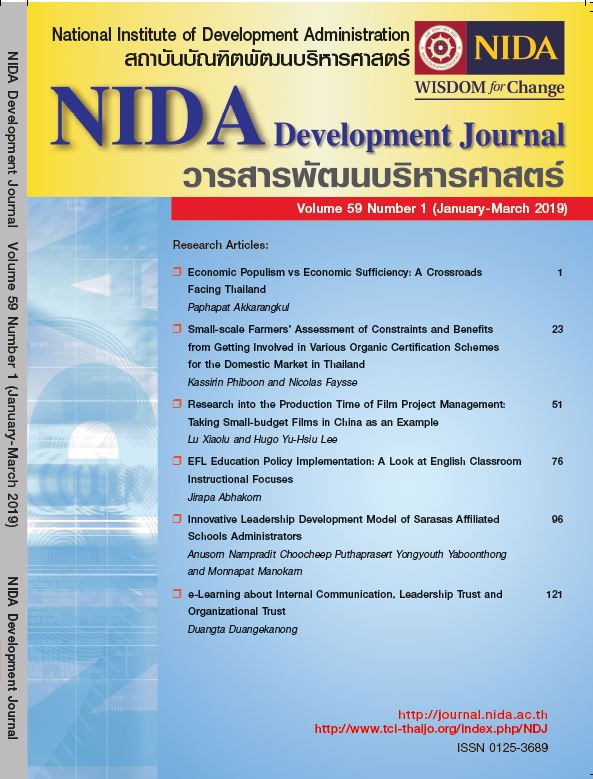Research into the Production Time of Film Project Management: Taking Small-budget Films in China as an Example
Keywords:
Film Project, Time of Production, Small-budget Films in ChinaAbstract
Presently, Chinese film has become industrialized while the production management system still being imperfect. Small-budget films account for the largest proportion of Chinese film output and the problems in production management, influence the development of the entire cultural industry. Among the problem, the waste of time caused by production management emerges endlessly. In this article, in-depth interviews with nine veterans in the industry and multiple case studies using six small-cost film crews for practical observations are combined. The time control problem in small-cost films is explained from the perspective of project time elements for the first time. Two phases of the preparatory period and the shooting period in the production are studied, analyzed and summarized by virtue of the Gantt Chart and the Critical Path Mapping to expand the theoretical framework of project time management in this field.
References
Chen, W. Y., & Yang, J. (2013). Project time management theory and probing. Special Zone Economy. 31(2), 221-222.
Clements, J. P., &Gido, J. (2009). Effective project management, 5th edition. Boston: Cengage Learning.
Crabtree, B. F., & Miller, W. L. (1999). Doing qualitative research. California: Sage Publications.
Eisenhardt, K. M., &Graebner, M. E. (2007). Theory building from cases: Opportunities and challenges. Academy of Management Journal, 50(1), 25-32.
Fan, Q. H., & Yang, L. (2014). Time management in project management. Human Resource Management. 9(11) 53.
Gong, J. C. (2007). Project management of film and television production. Shijiazhuang: Hebei Education Press.
Honthaner, E. L. (2010). The complete film production handbook 4th edition. Waltham: Focal Press.
Kerzner, H. (2013). Project management: A systems approach to planning, Scheduling and controlling,11th edition. Hoboken, New Jersey: John Wiley & Sons, Inc.
Lewis, J. P. (2011). Project planning, scheduling, and control: The ultimate hands-on guide to bringing projects in on time and on budget. New York: McGraw-Hill.
Li, D. H., & Zhang, N. (2017). Research on scheduling method based on project time management. Architectural Knowledge. 37(17), 127, 144.
Liu, Y. (2012). Application of time management theory on film production: a case study of "correspondence teacher". Journal of Beijing Film Academy, 29(2), 99-104.
Meredith, J. R., & Mantel, S. J. (2010). Project management: A managerial Approach,7th edition. Hoboken, New Jersey: John Wiley & Sons, Inc.
Nie, W., & Du, L. (2017). The analysis of the creative power of domestic small and medium-budget movies produced in recent years. Journal of Zhejiang University of Media & Communications. 24(1), 72-81, 165.
Project Management Institute. (2013). A guide to the project management body of knowledge: PMBOK guide 5th edition. Pennsylvania: PMI, Inc.
Song, L. (2009). On the essence of film production management. Modern Communication (Journal of Communication University of China). 31(2), 102-103.
Sina Finance. (2019 July 5). How to understand the industrialization of Chinese film. Retrieved from https://finance.sina.cn/2019-07-15/detail-ihytcitm2179664.d.html?from=wap
Yin, R. K. (2002). Case Study Research: Design and Methods (3nd ed.). Beverly Hills, United States: Sage Publications.
Zheng, D. T. (2009). The market outlet of the film with low budget. Contemporary Cinema,26(1), 14-24.





